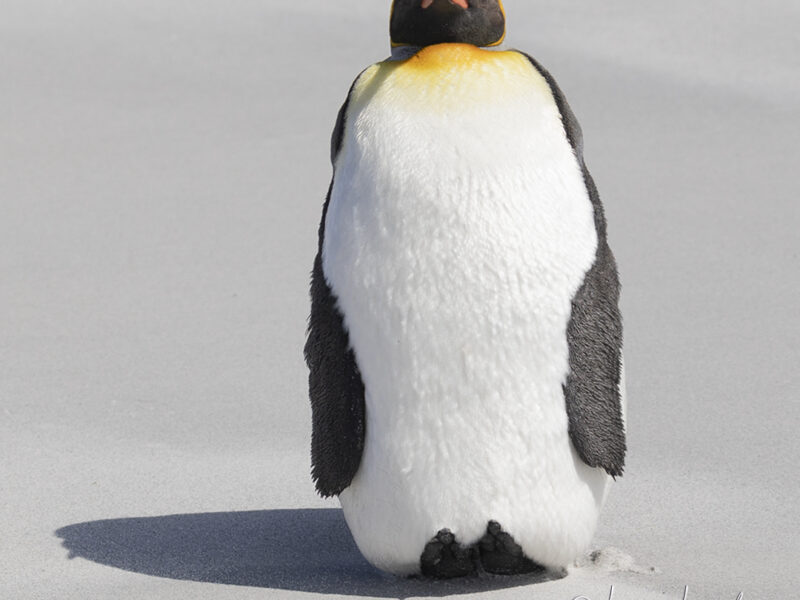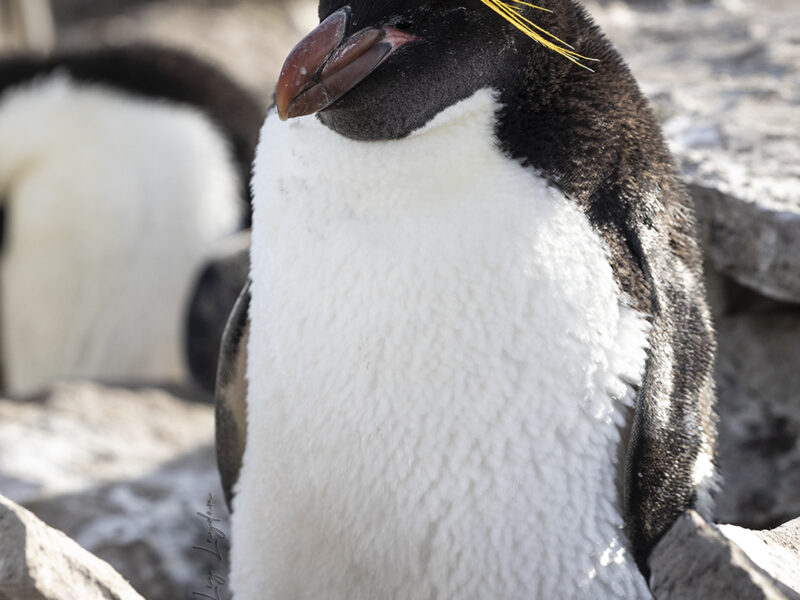A Swallow-tailed Gull, Creagrus furcatus, ‘looking at its feet’ on Isla Genovesa, Islas Galápagos, Ecuador.
Swalow-tailed Gulls are are near-endemic breeders to Galápagos, and like many endemic species which have ‘quirks’, they are unique among gulls in being nocturnal. Their eyes are the largest of all gull species, and are specially adapted to let them see well in total darkness. The eye-ring in adults is only red during the breeding season.
They fly over long distances over the Pacific Ocean to feed on squid and fish which rise to the ocean surface to feed on plankton. These prey species stay lower in the water at night around the time of full moon, as well as during the day, to protect themselves from predators from above. This is known as vertical migration.
A scientific study established that around the new moon, when there is less light and the squid and fish stay near the surface of the water, the Swallow-tailed Gulls spend more time hunting at sea, whereas around the time of the full moon, the gulls spend more time on land.
“For the swallow-tailed gulls it makes sense to be guided by the lunar cycle in their hunting, because, with a diving depth of no more than one metre, the prey is quickly beyond their reach on nights with a full moon,”
Martin Wikelski, Max Planck Institute
This image is copyright © Liz Leyden. All rights strictly as agreed in writing with the author or her agent.
It is available for sale as various types of wall art, and as home and personal accessories, from my gallery at Pixels.com.
My original photo, from which this image was derived, is available to purchase as a stock photo from iStock.


